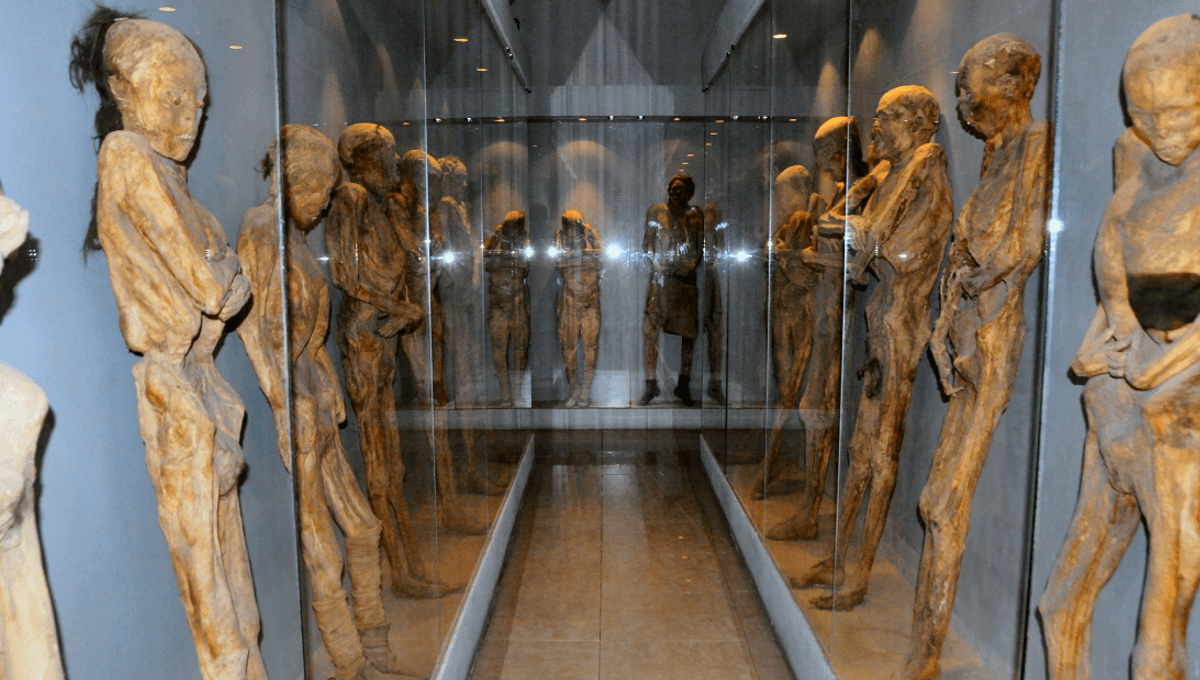
A traveling collection of ancient mummies from Mexico is thought to contain potentially hazardous colonies of fungi that warrant a review of how they’re displayed to ensure visitor safety. This advice comes from the National Institute of Anthropology and History, following concerns that the fungal growths could potentially infect people handling displays as well as those coming to see them.
“From some of the published photos, at least one of the corpses on display, which was inspected by the institute in November 2021, shows signs of a proliferation of possible fungus colonies,” AP News reports the institute said. “It is even more worrisome that they are still being exhibited without the safeguards for the public against biohazards.”
The mummies date back to the 1800s and are the result of corpses being buried in dry, mineral-rich soil. Known as The Mummies of Guanajuato, after the state where they were buried, they were exhumed when a “burial tax” was introduced that had to be paid to guarantee the bodies a place in the cemetery. Bodies whose families couldn’t afford the tax, or who had no relatives to pay it, were dug up and went on display.
The concerns center around the integrity of the glass cases in which the mummies are on display – if they’re not airtight it’s possible spores could reach visitors. “This should all be carefully studied to see if these are signs of a risk for the cultural legacy, as well as for those who handle them and come to see them,” the institute added,
If the threat is confirmed, it wouldn’t be the first time that ancient mummies have been suggested as a possible source of fungal infection for modern humans. The excavation of Tutankhamun, arguably the most famous mummy in human history, had a fungal scare of its own after a “curse” was rumored to have killed more than 10 people who attended the site, including Lord Carnarvon (it’s worth noting that a lot of people who were there when it was opened didn’t die for years to come).
Aspergillus was named a possible culprit, capable of surviving in a dormant state for extreme lengths of time in tombs, which can increase virulence. When the tomb was opened and air disturbed the peace for the first time in thousands of years, it could feasibly have kicked up spores that entered humans through the nose and mouth.
A fungal source of the Mummy’s Curse wouldn’t be without precedent, as a similar event occurred in 1970 when the tomb of King Casimir IV was opened. Of the 12 scientists present when the tomb was opened for the first time in 600 years, ten died within weeks. The exact culprit isn’t known for certain, but a variety of fungi was cultured from the tomb. Similarly, when Rameses II moved to Paris in 1976, researchers were able to isolate 89 different fungi species – including the “Mummy’s Curse” aspergillus.
Evidently, human remains being ancient isn’t enough to render them non-infectious, supporting the National Institute of Anthropology and History’s suggestion that care be taken when considering what’s suitable to go on display, and how it should be housed to best protect the public.
[H/T: Phys.org]
Source Link: Mummies Touring Since 1800s Showing Signs Of Potentially Hazardous Fungal Growths